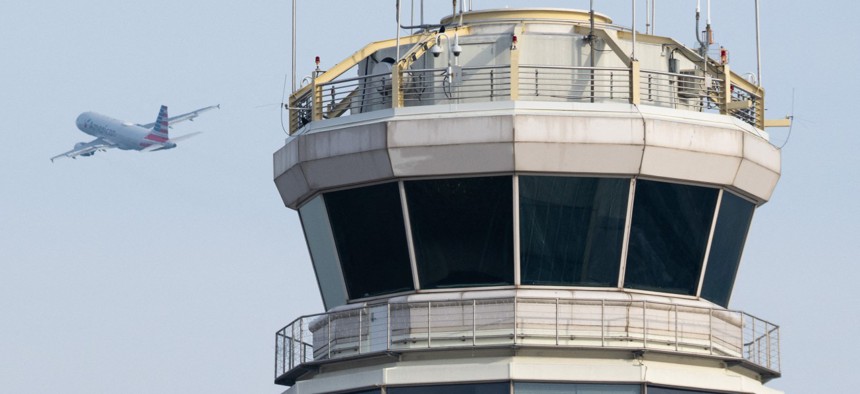Flight Delays Will Spike This Summer Due to FAA Staffing Shortages, the Agency Warns
Union leader says the FAA is taking some positive steps to address the crisis, but a solution is years away.
Staffing shortages among federal air traffic controllers have become so dire that the Federal Aviation Administration is asking airlines in certain areas to make fewer flights this summer, as employee groups are pleading with the agency to overhaul how it makes hiring decisions.
Staffing levels of certified controllers within the FAA are at 81% of the target nationally, the agency said in a notice on Wednesday. At the facility that provides service to the three major New York City-area airports, that figure is just 54%. FAA said operations in the New York area are expected to increase by 7% this summer, which, due to those staffing issues, will result in a 45% spike in delays. The agency is looking to address the issue by shifting Newark's radar operations to Philadelphia, but that is not slated to take place until September.
To address the issue more immediately in New York, as well as at Washington’s Ronald Reagan National Airport, FAA is allowing airlines to drop the minimum number of flights they must fly. Between May 15 and September 15, airlines can reduce their required slots by 10%.
“This relief is being provided to give carriers the ability to reduce operations during the peak summer travel period, which are likely to be exacerbated by the effects of air traffic controller staffing shortfalls,” the agency said.
Rich Santa, president of the National Air Traffic Controllers Association, told members of the House Transportation and Infrastructure Committee’s panel on Aviation on Thursday the staffing crisis is a longstanding one. While FAA has typically met its hiring goals in recent years, he said, the number of certified controllers is down 1,200 employees, or 10%, over the last decade. He praised FAA leadership for re-engaging with his union to develop a better assessment of the staffing needs at each agency facility. Santa called on FAA to follow through with that work and a review conducted by a consultant to create a more up-to-date, transparent staffing plan.
He added his working group submitted its plan to FAA acting-Administrator Billy Nolen in January, but it has yet to be implemented.
In his fiscal 2024 budget, President Biden proposed a 17% funding surge to improve FAA facilities and systems. After the fiscal 2023 omnibus funded the hiring of 1,500 new air traffic controllers, Biden is seeking appropriations to hire another 1,800 next year.
“The hiring and training surge will streamline the path for controller training while further increasing resiliency to serve high demand markets as air traffic increases to pre-pandemic levels,” FAA said.
Even more hiring will not immediately address the crisis at FAA, Santa said, as it takes one-to-three years to get new employees trained and certified. About 40% of hires drop out during the training process.
“We're still going to have a few years of challenges,” Santa said.
Just last week, lawmakers and representatives of FAA’s technical and inspection workforce also voiced significant concerns about a looming staffing crisis on that side of the agency’s operations.
Sharon Pinkerton, a senior vice president for Airlines for America, asserted that any widespread delays were the fault of the government, not her members. Airlines have hired 100,000 new employees in the last two years, she said.
“We’re essentially overstaffed right now and they are understaffed,” Pinkerton said in blaming FAA. “I think they need to take that seriously and address it.”
Lawmakers and witnesses noted the impact of the COVID-19 pandemic on the aviation industry, including a wave of retirements and FAA being forced to close its training academy. The entire sector, and FAA in particular, has struggled to meet demand as Americans have resumed flying at pre-pandemic levels.
FAA on Wednesday also issued an alert informing airlines, pilots and others to ensure they are taking key steps to avoid safety issues on runways. It noted that in recent months there have been "a number of notable and high visibility events" in which, for example, passenger planes have narrowly avoided each other during takeoffs and landings. FAA said that while the overall number of such incidents has not increased over historical levels, the "potential severity" of the near-misses was "concerning."
Santa said those issues also circled back to staffing.
“When you control more traffic with less operational positions you introduce risk into the system,” Santa said. He added that his group is working with the National Transportation Safety Board to address the issue but staffing shortages are forcing his members to work six-day weeks and 10-hour days, which creates additional risks.
NEXT STORY: Should Feds Be Afraid of a Second Trump Term?




